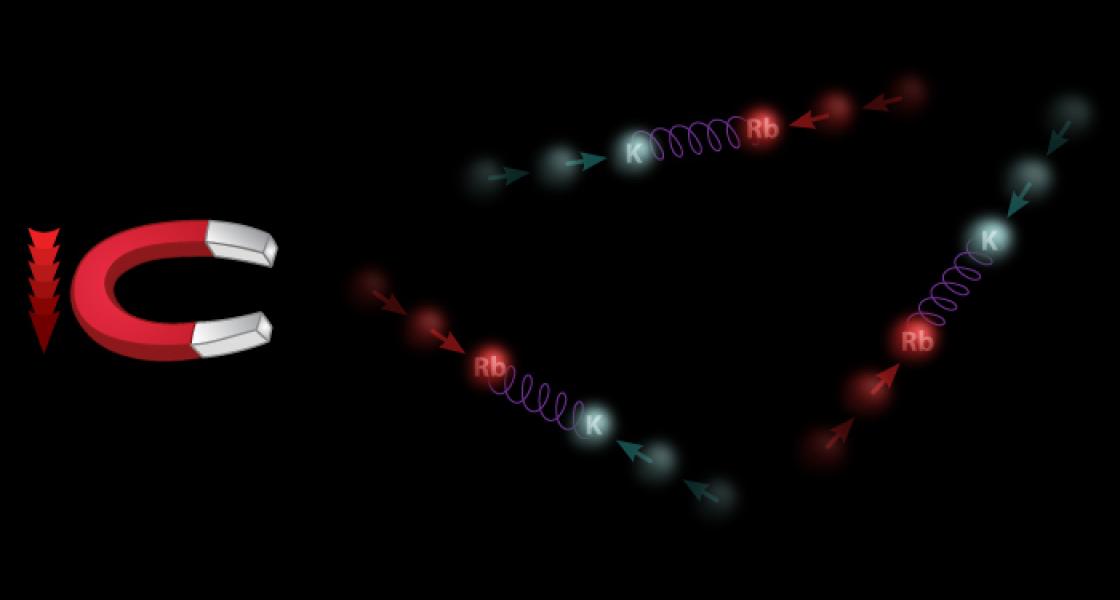Starting with ultracold atoms in a Bose-Einstein condensate, it’s possible to create coherent superpositions of atoms and molecules. Fellow Carl Wieman and others have done exactly this. Recently, the Jin group wondered if it would be possible to accomplish the same thing starting with a normal gas cloud of atoms. To spice up the experiment, they included two kinds of atoms: neighborly bosons (87Rb) that readily pile up in the same state and more independent-minded fermions (40K), no two of which are ever willing to occupy the same quantum state.
Would it be possible for free atoms just ambling along through a gas cloud to enter a quantum superposition of both being free atoms and being in a single, well-defined state known as a Feshbach molecule?
Graduate student Michele Olsen, research associate John Perreault, graduate student Tyler Cumby, and Fellow Debbie Jin decided to see. If they were successful, they’d not only gain a new tool for probing the behavior of strongly interacting mixtures of bosons and fermions, but also the means for investigating the detailed physics of Feshbach resonances, which play a key role in Fermi gas superfluidity.
To ensure that their ambling gas atoms comprised a distribution of energy states, Olsen and her colleagues kept the temperature of their ultracold gas cloud above the temperature where the 87Rb atoms could form a condensate. Then they created KRb molecules by slowly ramping down a magnetic field across an interspecies Feshbach resonance. Under the best conditions, they were able to form molecules from about a third of the 87Rb atoms in the cloud.
Then they met the challenge of creating coherent atom-molecule superpositions and measuring their oscillation frequency. The atoms oscillated between being free atoms and being a weakly bound molecule at a frequency that corresponded to the predicted binding energy of the Feshbach molecules. Because the atoms in the initial gas were all moving at different speeds, the researchers knew that the atom pairs would be in many different closely spaced energy levels. Interestingly, the energy spacing of these levels apparently set a lower limit on the observed oscillation frequency.
The researchers observed a damping of the atom-molecule oscillations as coherence was lost. The damping was not caused by a loss of molecules. Rather, some of it appeared to be due to differences in the energies of the atom pairs. However, variations in the applied magnetic field were also responsible. Thus the researchers’ next step will be to flatten out the magnetic field so they can explore the mechanisms responsible for moving the atom-molecule superpositions out of sync. - Julie Phillips




